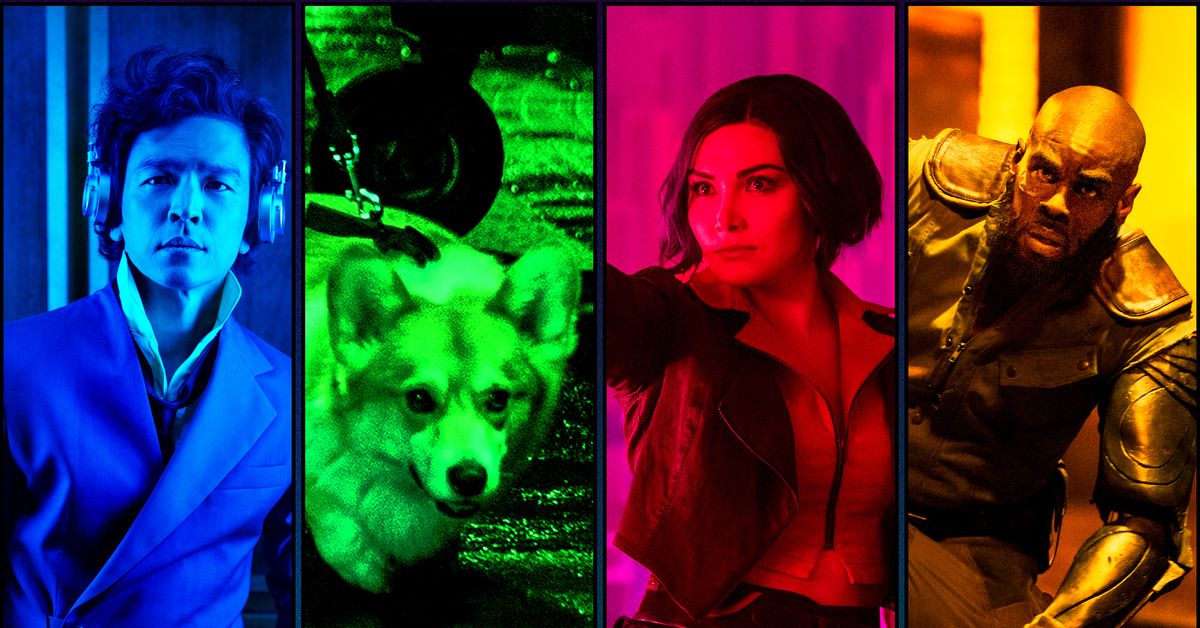“Whatever happens, happens.”
It’s an acceptable mantra for Spike Spiegel, the planet-hopping, doom-evading bounty hunter at the heart of Cowboy Bebop, but for a writer adapting one of the most acclaimed anime of all time into a Netflix series … well, not so much. Whatever happens to Cowboy Bebop matters. Showrunner André Nemec knew it when he agreed to oversee the reimagining of director Shinichirō Watanabe’s show as a live-action drama, knew it when he stepped on set for the first time in 2019, and he knows it now, overseeing a team in New Zealand putting the finishing touches on season 1, due out in November.
“I was fond of saying, ‘This is Cowboy Bebop, it’s pretty hallowed ground, so let’s not fuck it up,’” Nemec tells Polygon over Zoom.
Across 26 episodes and one feature film, Watanabe, screenwriter Keiko Nobumoto, animation director Toshihiro Kawamoto, key animator Yutaka Nakamura, and composer Yoko Kanno set a genre-bending story of found family and high-flying adventure to a syncopated beat. Spike, Cowboy Bebop’s leading man, was a smooth-operating bounty hunter who could fight his way out of any situation, except heartbreak. His accomplice Jet Black was an ex-cop with a cybernetic arm and a heart of (metaphorical) gold. The sharp and often deadly Faye Valentine joined the crew to get hers, and maybe moor her wayward soul to a modicum of stability. Ed, the kid genius of the group, was also a supernova of personality — who luckily knew their way around a computer. Then there was Ein, a genetically enhanced “data dog” whose main purpose was looking adorable as the bounty hunter team jumped around the solar system in a souped-up fishing trawler known as the Bebop.
The motley crew made perfect sense in the melancholic action swirl of Watanabe’s anime, where a mishandled heist could feel like Bob Fosse choreography, and a shoot-em-up showdown always landed enough shots to pierce raw human psychology. Audiences got it, too; Cowboy Bebop premiered in 2001 on Cartoon Network’s just-launched Adult Swim block, and melted the brains of the night owls who’d never seen anything like East-meets-West science fiction remix. The next 20 years saw the launch and rise of the influential Toonami programming block, the mainstreaming of anime, and the canonization of Bebop as endlessly watchable television.
So why remake Cowboy Bebop? Nemec says he wouldn’t dare try. Instead, to bring Cowboy Bebop to Netflix, the showrunner’s writing team studied the stars that perfectly aligned to make the original version what it was, then dared to realign them. If Nemec and his team could draw out the core elements of the anime, in theory, they could tell a new set of stories in the show’s exciting, known universe. The chance to cast John Cho (Star Trek) as Spike, Mustafa Shakir (Luke Cage) as Jet, and Daniella Pineda (Jurassic World: Dominion) as Faye only made the high-risk, high-reward prospects more alluring.
“We would look at sets, we would look at props, we would look at costumes, we would look at the edits, we would talk about all of these things, not to ape the anime,” the showrunner says, “but to live in the spirit of the anime.”

Photo: Nicola Dove/Netflix
The original Cowboy Bebop brimmed with spirit worth siphoning off. But for Nemec, translating Cowboy Bebop meant considering how a live-action treatment could take advantage of live action. “There are obviously things that we cannot achieve with real people that an anime can,” he admits. So Nemec and his writing staff looked beyond the source material to the movies that influenced Watanabe when he began developing the anime with studio Sunrise back in the 1990s. The Netflix Bebop team looked at Howard Hawks’ Raymond Chandler adaptation The Big Sleep (1946), the classic Sergio Leone spaghetti Western The Good, the Bad and the Ugly, the New Hollywood classic Bonnie & Clyde, Stanley Kubrick’s 2001: A Space Odyssey, the cop-with-a-gun thriller Dirty Harry, Richard Donner’s defining buddy comedy Lethal Weapon, and even the macabre action drama The Crow to divine the soul of Bebop through the reality of cinema. “We put a pretty extensive and expansive list together, and we spent a lot of time really looking at the inspirations,” Nemec says.
In charge of coalescing those disparate tones is a staff who, previous to being recruited for the job, dedicated hours of previous free-time to watching and rewatching the anime seroes. Joining Nemec on season 1 are Christopher Yost (Thor: Ragnarok), who wrote Cowboy Bebop’s initial pilot, Vivian Lee (Lost in Space), Liz Sagal (Sons of Anarchy), Karl Taro Greenfeld (Ray Donovan), Alexandra E Hartman, Sean Cummings (Everything Sucks!), Javier Grillo-Marxuach (Lost), and Jennifer Johnson (Designated Survivor). “People would come in for interviews and for meetings with their old school Cowboy Bebop t-shirts on,” Nemec recalls with a laugh. “Everybody who worked on this show got the job because they were talented, and they deserved it, but everyone brought a certain level of fandom and reverence for the enemy to the material that we did.”
The showrunner is careful not to spoil any specific beats plotted out for season 1, but suggests that the original show’s blend of one-off missions and overarching plots carries over to the Netflix series, even in the current Every Story Is Serialized era. “They’re bounty hunters, so they’re going to chase bounties!” he cheekily notes. And while no one episode of the anime may get a direct adaptation, Nemec and his team spent time drawing up lists of their favorites, then considering how they could “build out the continuing stories of Spike Spiegel and Jet Black and Faye Valentine while also mining their past stories from the anime” He says every episode of the Netflix series will nod to the anime in subtle ways, be it through props, names, or visual references to Sunrise’s original animation. “I would challenge almost any superfan on this show to see if they can find [all the references] in the frame,” Nemec says. He adds that the original Japanese and English voice actors will also be “properly homaged.”
But for Nemec, whose own credits include Alias, Life on Mars, Zoo, and Mission: Impossible – Ghost Protocol, emulation of the anime took a backseat to extrapolation. Bringing the series to live action in 2024 meant rethinking Watanabe’s vision of the year 2071, and a set of characters who may have a more complicated place in the cosmos.
“I think anybody who’s a fan of Cowboy Bebop knows that Cowboy Bebop presents a multicultural view of the future,” he says. “And so you will see elements of all cultures. It’s not a dystopian world presented in the anime. It’s a very beautiful imagining of a future. People are more bonded. It’s a cowboy show — so they’re a little violent, and people kill each other, and life is a little cheap — but the multiculturalism of the anime is what we translated to the screen as well.”
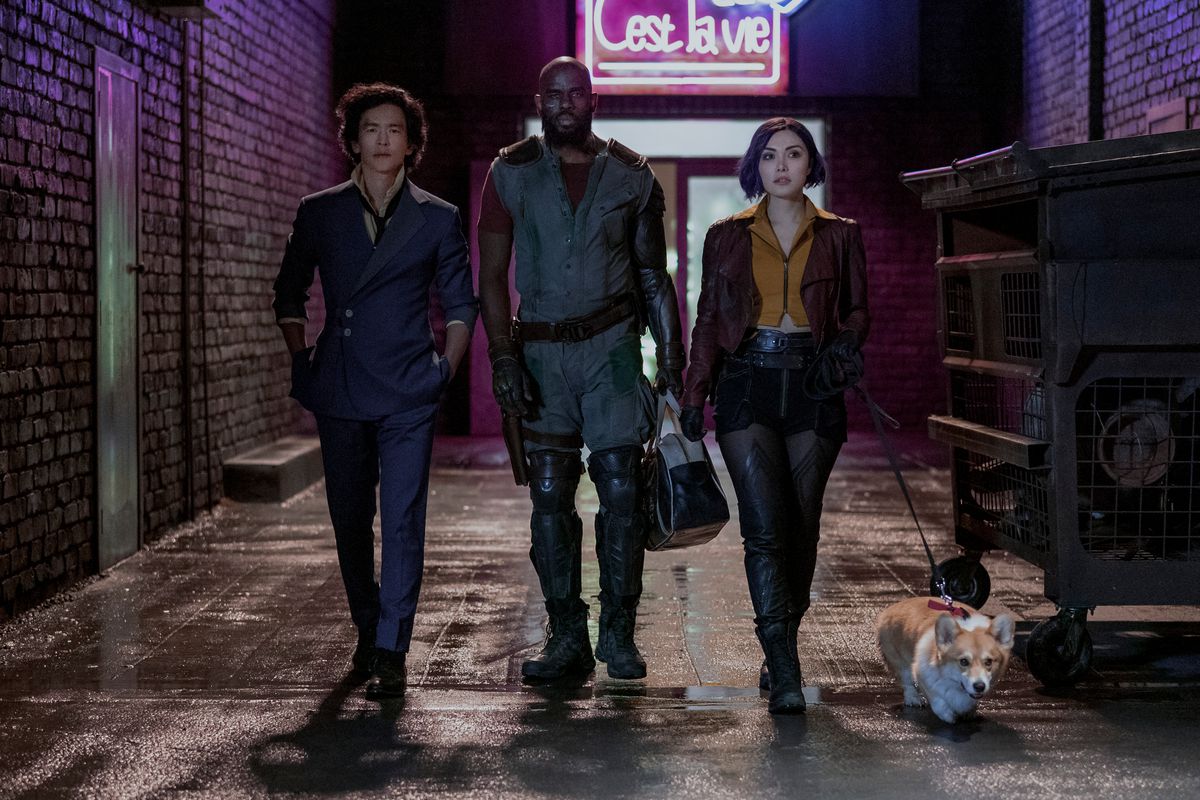
Photo: Geoffrey Short/Netflix
When conversation turns to (re)introducing Spike, Jet, and Faye, Nemec becomes visibly excited. The characters are why he took the job, after years of a Bebop adaptation sitting in development limbo with no producer or writer seemingly able to crack an approach. While the of the anime can feel “archetypal in their poetry,” the showrunner believes Cho, Shakir, and Pineda bring even greater dimension to the trio. Cho, who says he abandoned expectations of what acting meant to him to train like a madman and own the physicality of the role, plays what Nemec calls “a cowboy with a broken heart,” and a character with endless potential. “I think that the telling of that story was exciting to me because there were things in the anime that were alluded to and hinted at, and … I think that there’s a deep soul to Spike Spiegel, despite his laconic and sort of laissez faire, brush-it-off presentation. To be able to tell a story about who you are, what made you who you are, and where you go from there was very dynamic to sit around and figure out.”
Carving out a story for Spike also meant building up a sturdier arc for Julia, his object of affection in the anime who one day disappears, driving the bounty hunter’s never-ending search for answers. Played by Elena Satine (The Gifted), Julia will have a meatier role in the Netflix show, out of necessity. “In the anime, she’s almost more of an idea than a character. So we mined what we could from the information that we had and we built out who these people were.”
Colorblind casting Shakir as ex-cop Jet Black may have broader socio-political implications in the show, but weeks out from the premiere, but instead of getting into specifics, Nemec homes into why they found the perfect match of actor and material. “Jet Black at his core, despite all of the hardships that are always presented to him in the anime, is an optimist at heart,” the showrunner says. “And I think in meeting Mustafa, and in talking with him and going through the casting process, he presented such power and such a beautiful spirit. Mustafa is fond of saying something in the sweetest, most beautiful way, ‘Hey man, I love love.’ He again is such a powerful presence, but with this beauty and the softness inside him, it was unquestionable that he had the essence of Jet Black.”
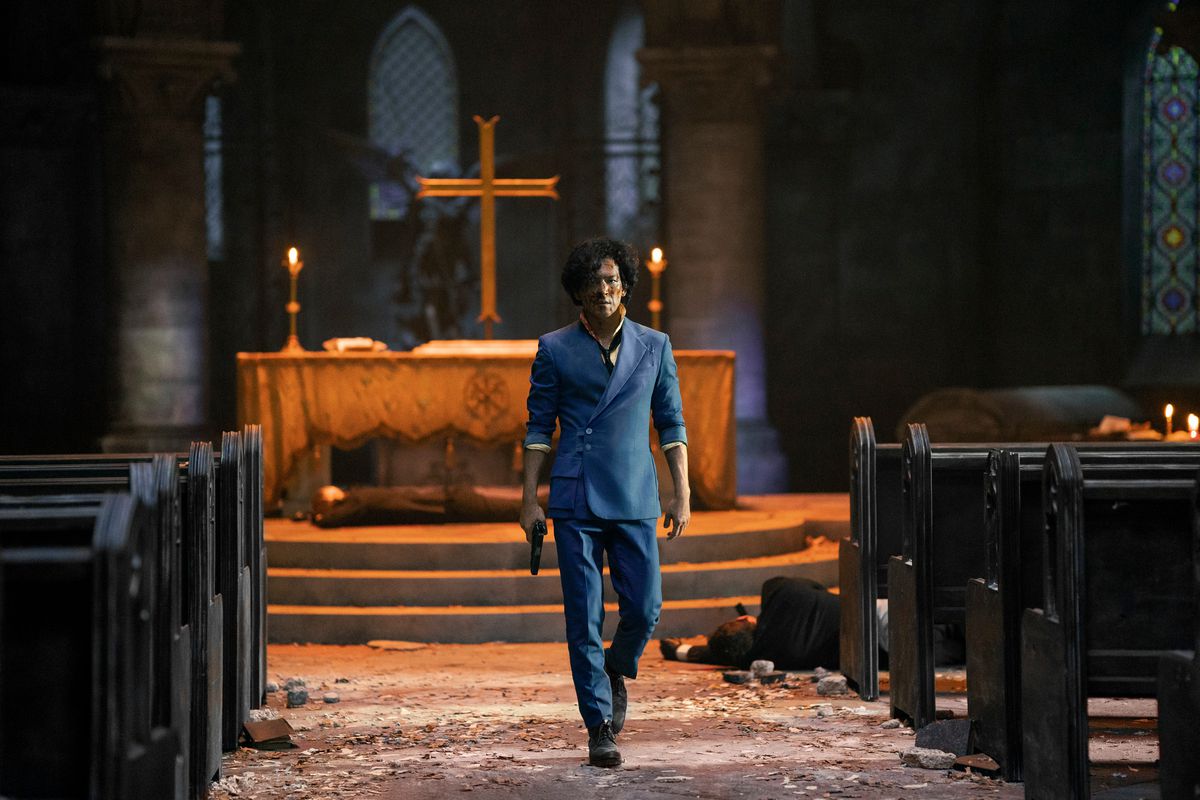
Photo: Geoffrey Short/Netflix
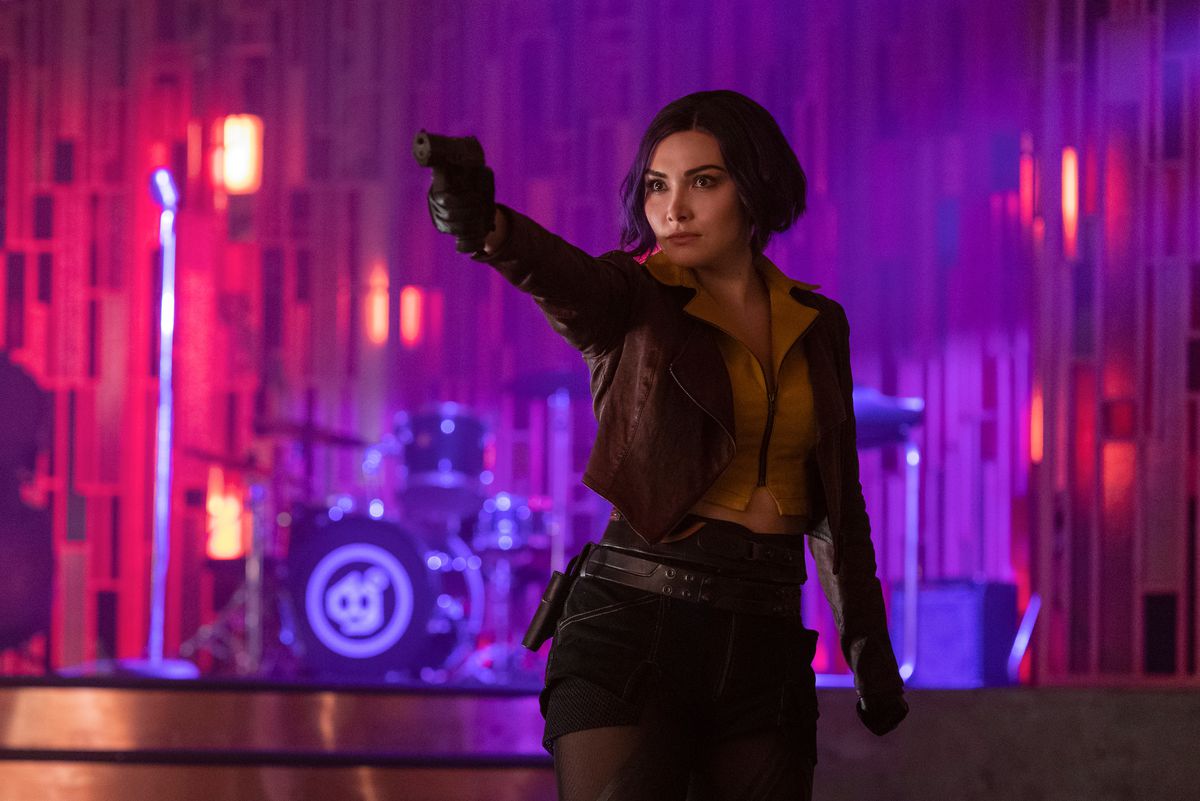
Photo: Geoffrey Short/Netflix
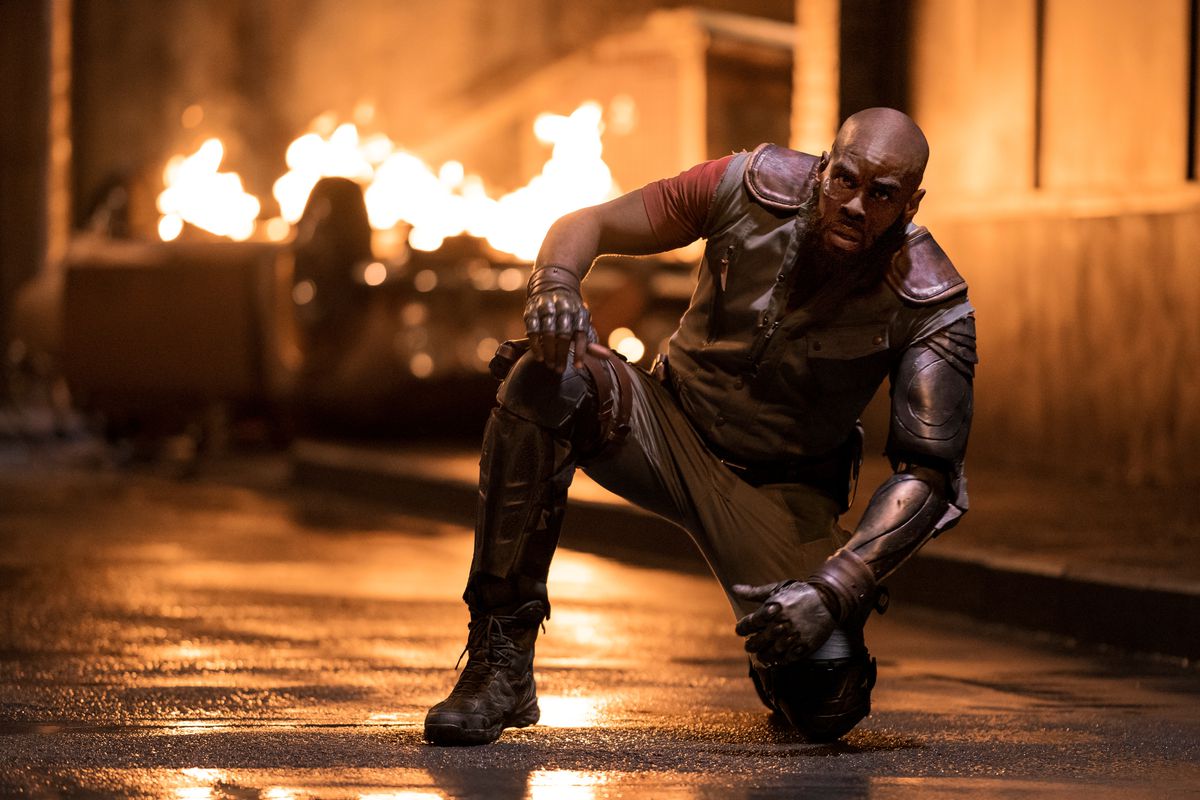
Photo: Geoffrey Short/Netflix
After rewatching Cowboy Bebop, Nemec and the staff’s big takeaway on Faye Valentine, and the key thing they wanted to mine from the animated portrayal, was that she “is a survivor.” Pineda brought the entire, dimensional attitude to the table in her audition. “It became undeniable that she has this incredible effervescence, a quick wit, a wonderful charm, but she also has a kind of take-no-prisoners kick-him-in-the-teeth underbelly to her,” Nemec says. “She has a strength and power, even though she doesn’t lead with that power. To me, that was what it meant to capture Faye Valentine.”
Funny enough, Pineda has already brought the first taste of Faye’s spirit to the small screen: Shortly after a batch of photos revealed the actors in costume for the first time, the actress took to Instagram to sarcastically prod fans who thought she didn’t look the part. “Six foot, double-D sized breasts, two-inch waist […] they looked everywhere for that woman and couldn’t find her […] so they went with my short ass.”
The Cowboy Bebop production team took extreme measures to develop the perfect, practical costumes. Nemec says nearly 20 different cuts of Spike’s suit were produced with variations of his shirt, shirt collar, and tie, all with varying lengths and widths until they nailed down a practical version of his cartoon lewk. “We probably went through 50 different blues to find the blue of that suit that was the right fabric,” the showrunner says. “And we did that every single character. We figured out Jet’s costume and what was going to feel right on Mustafa figure out how that arm would work. We did it with Daniella, put her in a dozen different designs, tweaked them a dozen different times until we landed on the one that felt like it was telling the story of that character in the best way possible for us.” As for why Faye’s Extremely Anime Hot Pants were swapped out for a full-body leather suit, Nemec is frank: “If I never saw Cowboy Bebop, this tells me the story that this woman is a survivor.”
Nemec is striving to bring the bespoke quality of Bebop to each character and setpiece. Working with directors Alex Garcia Lopez (Daredevil) and Michael Katleman (Zoo), who split the 10-episode first season, and stunt coordinator Allan Poppleton (The Wolverine), the Bebop team ensured a variety of martial arts and fight techniques would pop up in the series, and that audiences will “see different versions of action sequences in which you’re really like living through the character versus just a singular style throughout the show.” Plus there are spaceships. Zooming, roaring, recklessly driven spaceships. And the crown jewel is the Bebop, scrutinized in every episode of the anime in order to land on the Ideal Bebop. “Anybody who really knows the anime will know that there are different versions of the Bebop,” Nemec says. “It’s a little wider here, it’s got a little bit more of a potbelly, it’s a little bit longer, it’s a little grayer. So we did dozens and dozens of designs, put a dozen different Bebops on 3D turntables, moved them around, and got to where we felt this was the best representation of the Bebop.”
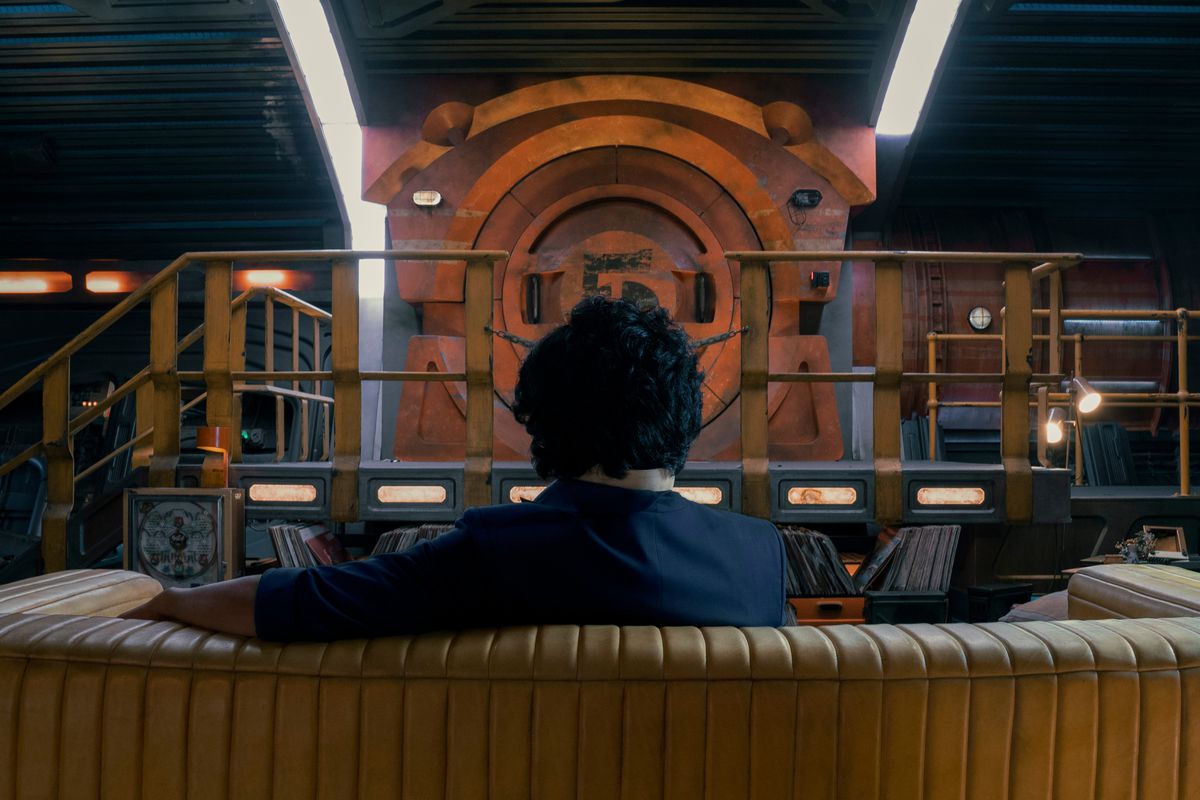
Photo: Nicola Dove/Netflix
The spirit of Cowboy Bebop was in the details, but the real soul of the show came when the Netflix show’s crew handed over the footage to Yoko Kanno, who returned to score the series. Nemec recalls hearing Bebop’s iconic brassy music cues before ever seeing an episode of the show, and “Yoko’s involvement in this show to me was paramount to almost everything else.” Bringing the composer on board for the live-action series was not just for show — Kanno has completely reimagined the music of Bebop, “hitting some of your old favorites in Cowboy Bebop, and really digging deep and into the skin of our telling of Cowboy Bebop and the characters as presented.” Nemec can barely contain himself in setting expectations for the show’s soundtrack.
“Anybody who loves the music from Cowboy Bebop is going to love beyond what Yoko has done for us on this show. It is really sensational. I will hear music pieces come in, we will talk about character and theme, and then when I get those pieces there have been more times than I can remember that I hear something and I’m like … a smile comes to my face.” When I ask Nemec if we’ll hear “Tank!,” easily Kanno’s most recognizable cue, play out across the show’s opening credits, that smile comes to his face. “You’ll be thrilled when you watch the show,” he says.
In still images, Netflix’s Cowboy Bebop looks like a best case scenario for the generally ill-fated genre of live-action anime adaptations. Frozen like single cels of animation, the actors exude the parts, and Nemec’s enthusiasm for the show — and the alchemy of its key elements — is infectious. But some big questions remain: Like, where is Ed?
“Ed — everybody wants to know about Ed!” Clearly, I am not the first person to ask Nemec about Ed, but he has a mostly concrete answer. “People will be … very delighted when they watch the season.”
Nemec promises surprises, but one thing the showrunner’s more than happy to brag about is their production’s dog. Or, rather, dogs — there were two: Ein is played by a pair of corgis, who the writer describes as “big meaty sausages.” And rethinking the Bebop’s superintelligent pup was every bit as essential to the fabric of the series as the treatment of any other character.
“Ein is definitely in our show, and is definitely part of the team,” Nemec says. “As always, there was something to talk about with each one of [the characters]. What is the real soul of this character? We did that work for Ein as well.”
This is the point Nemec stresses over and over: he wanted his entire team on the Netflix show to do the work. The show, he promises, will come to life in the details. There is a version of the live-action adaptation made by people unfamiliar with Cowboy Bebop who just see an unadapted IP full of star cruisers, crime syndicates, and a suave-as-hell movie-star-type in a perfect suit. Then there’s the version made by people who see Watanabe’s work as a playful remix of pop culture, and in the case of an adaptation, a license to try anything. Nemec believes they’ve interpreted the assignment to “remake” Cowboy Bebop as the anime director would have in the 1990s.
“The greatest part about being able to work on this was that we knew we were being invited to play in somebody else’s sandbox,” Nemec says, referring to Watanabe, who acts as a consultant on the series, “and that sandbox was very generous in saying to us, ‘You tell your story.”
All 10 episodes of Cowboy Bebop premiere on Netflix on Nov. 19.
Polygon – All
Source link
Related Post:
- Live-Action Cowboy Bebop Spike, Faye and Jet Photos Shared
- Cowboy Bebop: Netflix release date, first John Cho’s Spike photos revealed
- Cowboy Bebop: Netflix reveals live-action cast, composer Yoko Kanno
- Cowboy Bebop Yoko Kanno Soundtrack Announced for Netflix Show
- First Look At Netflix’s Cowboy Bebop With New Set Photos, Release Date Revealed
- Spell-Casting Xbox, PC Shooter Into The Pit Wows At GamesCom
- The Last Of Us TV Series: Every Character Casting Confirmed So Far
- Resident Evil: Welcome To Raccoon City Movie Director On Casting Decisions
- Tales of Arise Gets New Video Introducing Bonus DLC Costumes & Music
- Upcoming Halo TV series loses its showrunner after one season
